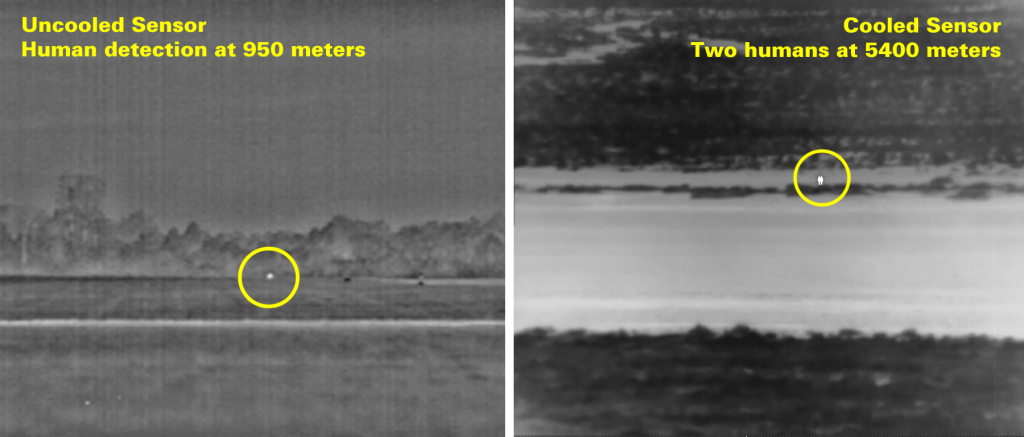Cooled vs. Uncooled Detectors
Some thermal imagers have what are called Cooled Detectors, while other have Uncooled Detectors. This has to do with whether the detector chip needs to be cooled to cryogenic temperatures to allow the imager to work properly. As a general rule (though there are some limited exceptions), uncooled detectors operate in the Long Wave Infrared (LWIR) band, which is generally from about 7.5µm to 14µm (there can be small variations in spectral range from different manufacturers). Cooled detectors generally operate in the Mid Wave Infrared (MWIR) range, which is generally from about 3.0µm to 5.0µm. Cooled detectors operate on a different detection principle from uncooled detectors, and often have to be cooled to temperatures of about 77K (though some newer ‘hot’ MWIR systems are only cooled to about 130K). Modern cooled detectors achieve this with built-in micro-refrigeration coolers; these are closed-cycle coolers which cool the detector chip and reject the heat to a heat sink. Coolers have a finite life cycle, typically expressed in thousands of hours; common modern detectors are rated between 10,000 to 20,000 hours of (continuous use) life, though power cycling them frequently will reduce their life span. Uncooled detectors do not need to be cooled to this level, though they are often temperature stabilized with Peltier coolers to a minimum degree, to provide reliable results.
Cooled detectors tend to be much more sensitive than uncooled detectors; this allows use of ‘flower’ (higher f-number) lenses, which reduces costs when using long focal length optics. Uncooled detectors, being generally less sensitive, need the greater energy-gathering capabilities of low f-number lenses to operate well. While cooled detectors are generally a fair bit more expensive than uncooled detectors, the ability to use higher f-number optics (which reduces the size of the optics) allows them to be less expensive as a system when using very long focal lengths. The general break point at which it becomes more cost effective to use a cooled system often happens with focal lengths above about 250mm; for these long focal length system, the cost savings of smaller optics becomes greater than the cost increase of the detector. For this reason, nearly all very long range thermal imagers use cooled detectors. Other factors (such as use in a humid environment, where water vapor absorbs heavily in LWIR) can also cause the need to use MWIR (and therefore cooled) detectors.

